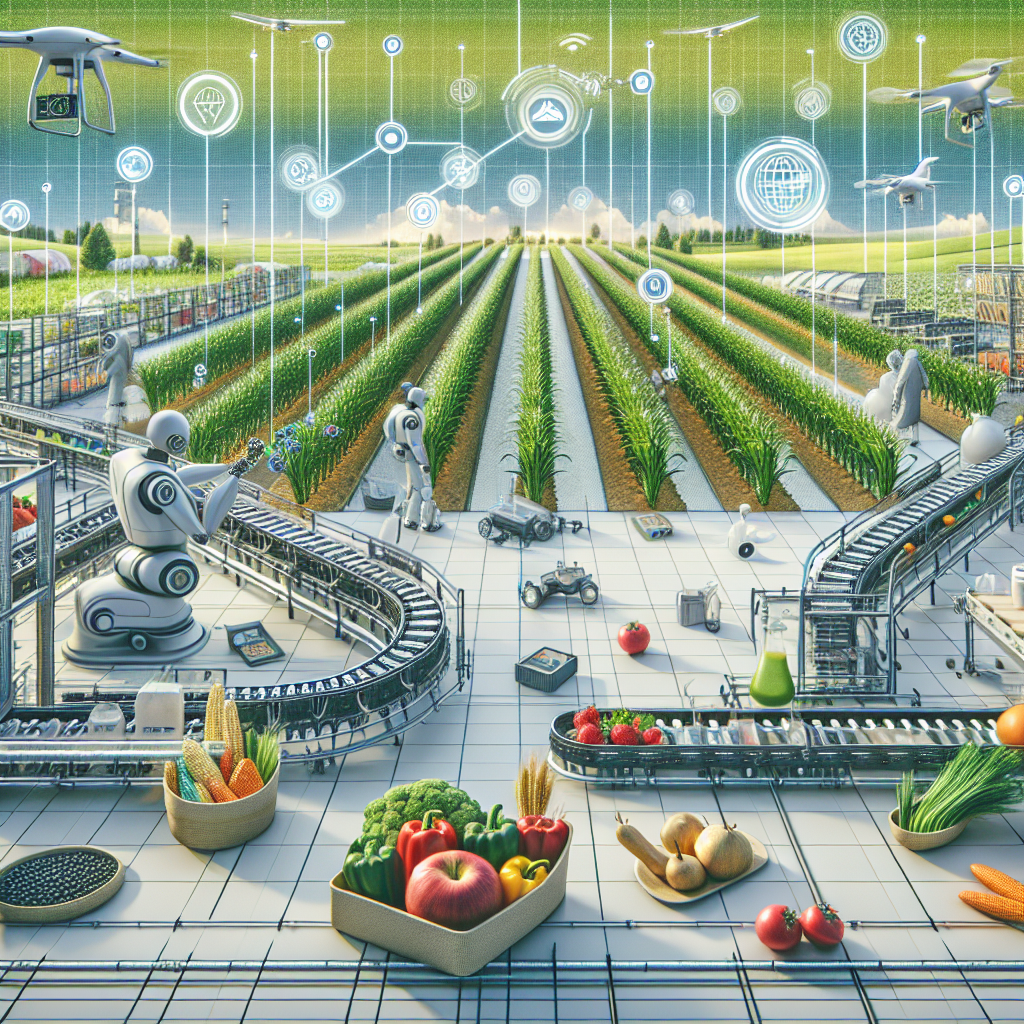Enhancing Food Packaging with AI in Agriculture
In recent years, the agriculture industry has seen a significant shift towards incorporating artificial intelligence (AI) technology to improve various processes and practices. One area that has shown great promise is in enhancing food packaging using AI. By utilizing AI in agriculture, farmers and food producers can improve the quality and safety of their products, reduce waste, and ultimately provide consumers with better and more sustainable food options.
AI technology has the potential to revolutionize the way food is packaged and distributed, leading to significant improvements in the overall food supply chain. From optimizing packaging designs to monitoring food quality and safety, AI can play a crucial role in ensuring that food products reach consumers in the best possible condition.
One of the key ways in which AI can enhance food packaging in agriculture is through predictive analytics. By analyzing data on factors such as temperature, humidity, and air quality, AI can help farmers and food producers predict when food products are at risk of spoilage or contamination. This allows them to take proactive measures to prevent these issues before they occur, ultimately reducing waste and improving the overall quality of the product.
AI can also be used to optimize packaging designs to better protect food products during transportation and storage. By analyzing data on various packaging materials and designs, AI can help farmers and food producers identify the most effective packaging solutions for their products. This can lead to reduced damage during transit, longer shelf life, and ultimately a better overall consumer experience.
Another important way in which AI can enhance food packaging in agriculture is through the use of smart packaging technologies. These technologies incorporate sensors and other devices that can monitor various aspects of the food product, such as temperature, moisture levels, and even the presence of contaminants. By leveraging AI to analyze this data in real-time, farmers and food producers can quickly identify any issues with the product and take immediate action to address them. This not only ensures the safety and quality of the product but also helps to build consumer trust in the brand.
In addition to improving food safety and quality, AI can also help to reduce food waste in the agriculture industry. By using predictive analytics to identify when food products are at risk of spoilage, farmers and food producers can take steps to prevent this waste from occurring. This can lead to significant cost savings for the industry and help to create a more sustainable food supply chain.
Overall, the integration of AI technology into food packaging in agriculture has the potential to revolutionize the way food products are produced, packaged, and distributed. By leveraging AI to optimize packaging designs, monitor food quality and safety, and reduce waste, farmers and food producers can provide consumers with better and more sustainable food options.
FAQs:
Q: How does AI technology improve food packaging in agriculture?
A: AI technology can improve food packaging in agriculture in several ways, including through predictive analytics, optimized packaging designs, and smart packaging technologies. By analyzing data on factors such as temperature, humidity, and air quality, AI can help farmers and food producers predict when food products are at risk of spoilage or contamination. This allows them to take proactive measures to prevent these issues before they occur, ultimately reducing waste and improving the overall quality of the product.
Q: What are some examples of smart packaging technologies?
A: Smart packaging technologies incorporate sensors and other devices that can monitor various aspects of the food product, such as temperature, moisture levels, and the presence of contaminants. By analyzing this data in real-time, farmers and food producers can quickly identify any issues with the product and take immediate action to address them. This helps to ensure the safety and quality of the product and build consumer trust in the brand.
Q: How does AI technology help to reduce food waste in agriculture?
A: By using predictive analytics to identify when food products are at risk of spoilage, farmers and food producers can take steps to prevent this waste from occurring. This can lead to significant cost savings for the industry and help to create a more sustainable food supply chain. AI technology can help to optimize packaging designs, monitor food quality and safety, and reduce waste in the agriculture industry.
In conclusion, AI technology has the potential to revolutionize food packaging in agriculture by improving food safety and quality, reducing waste, and creating a more sustainable food supply chain. By leveraging AI to optimize packaging designs, monitor food quality and safety, and reduce waste, farmers and food producers can provide consumers with better and more sustainable food options.

